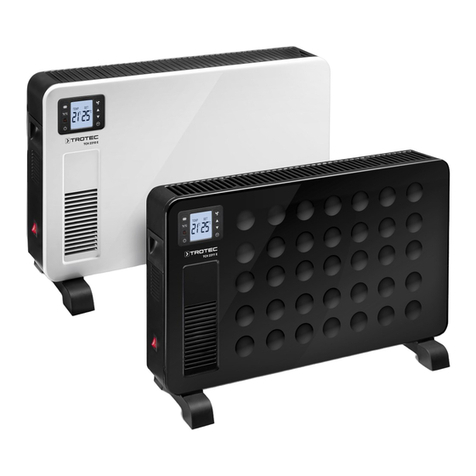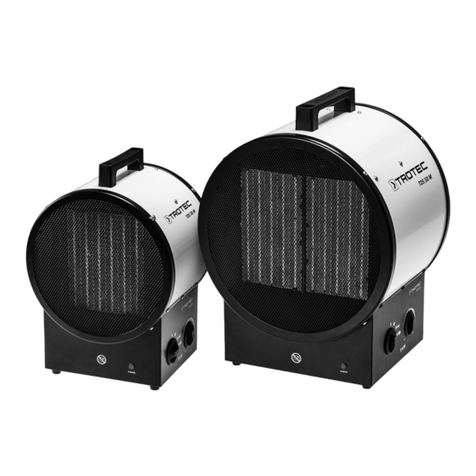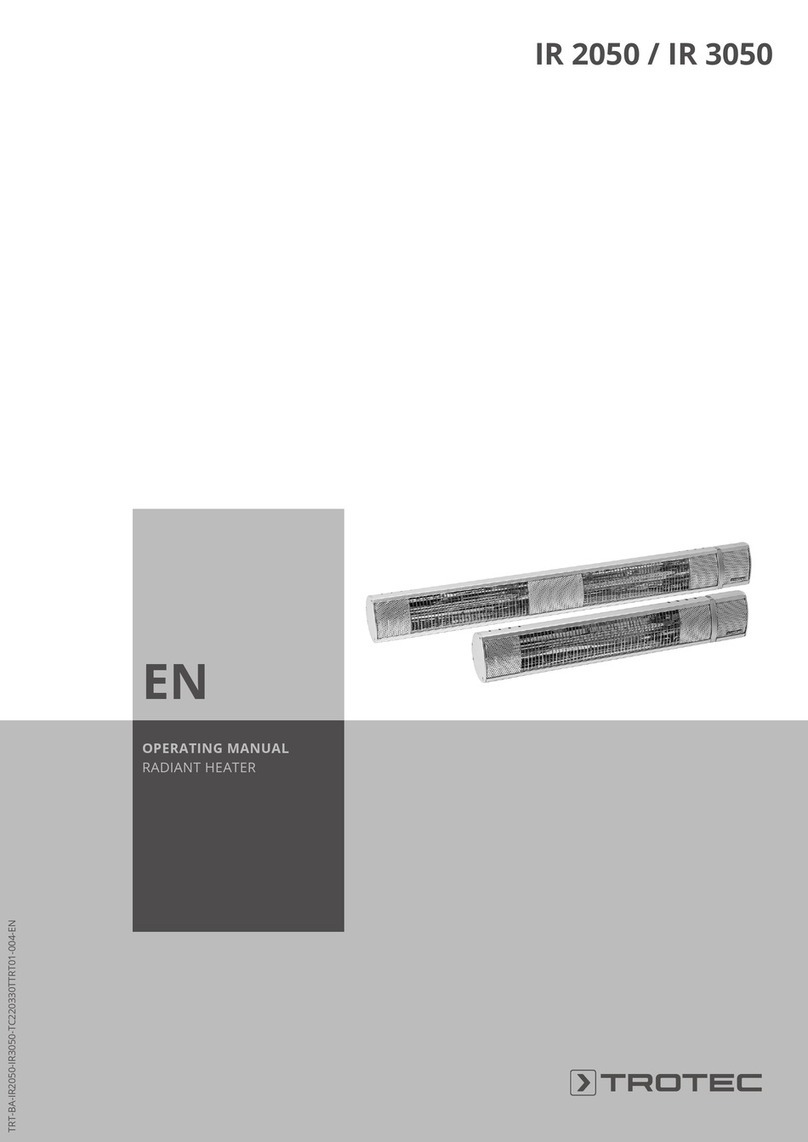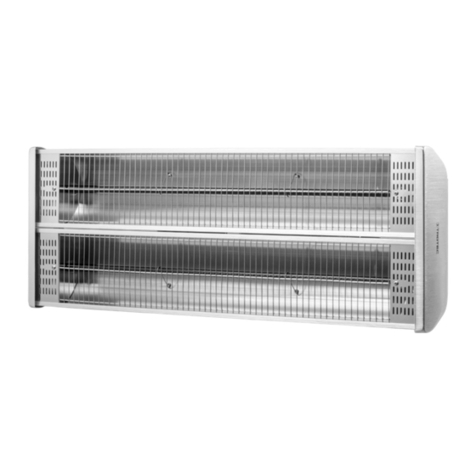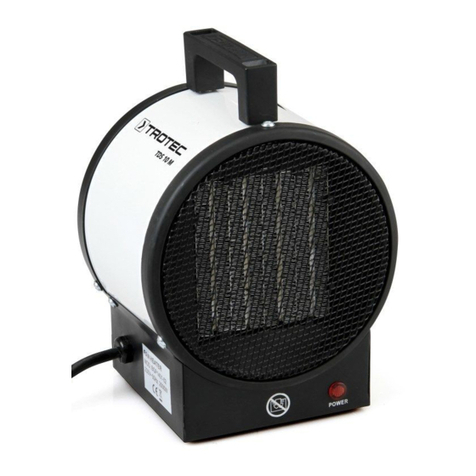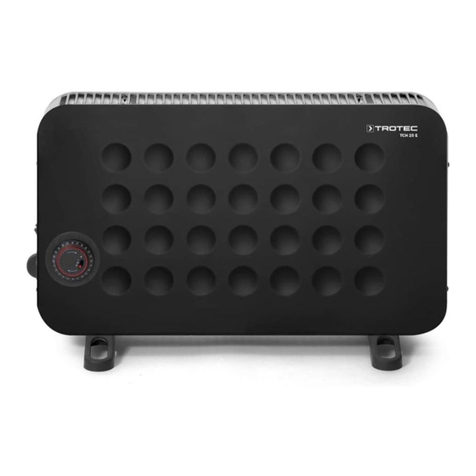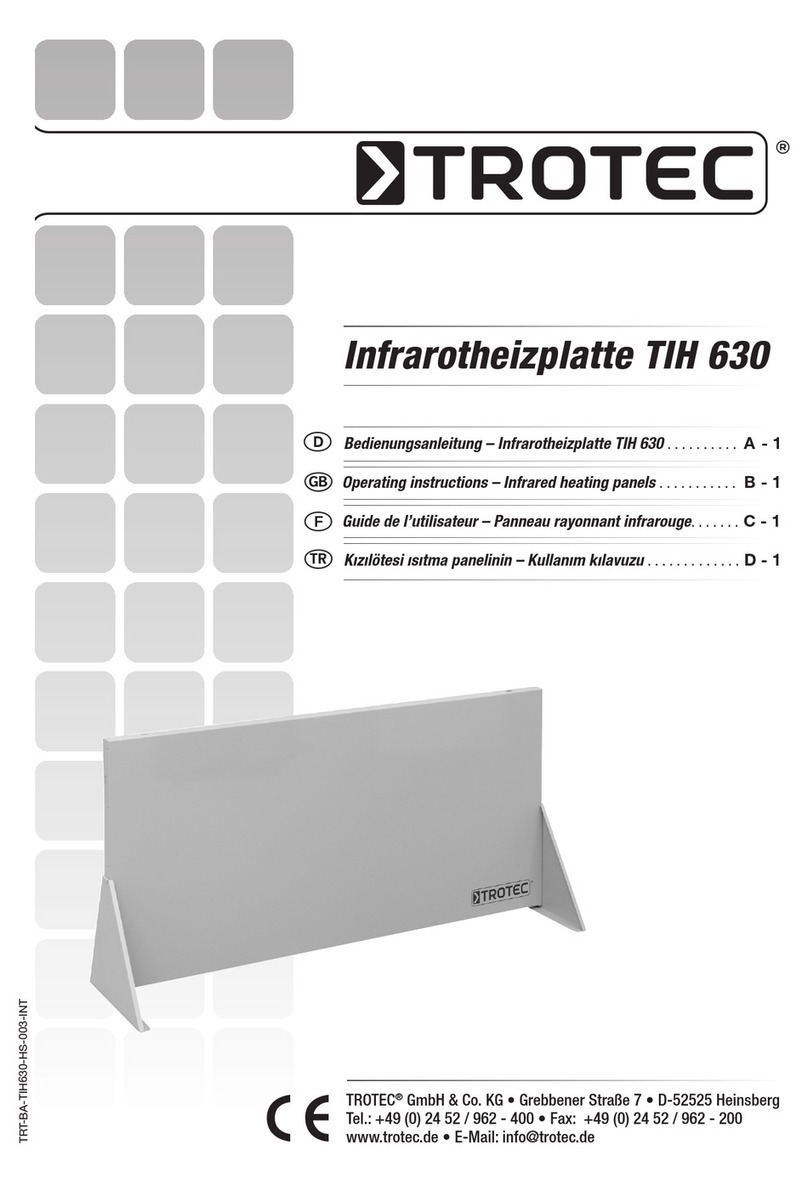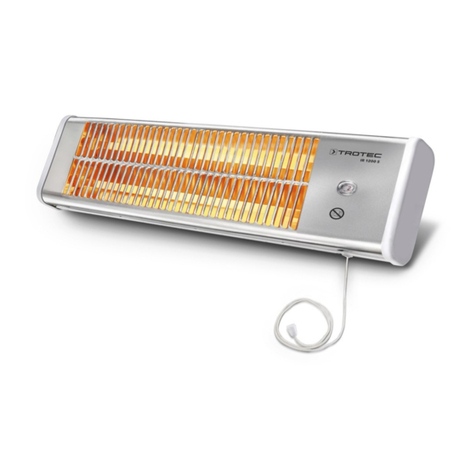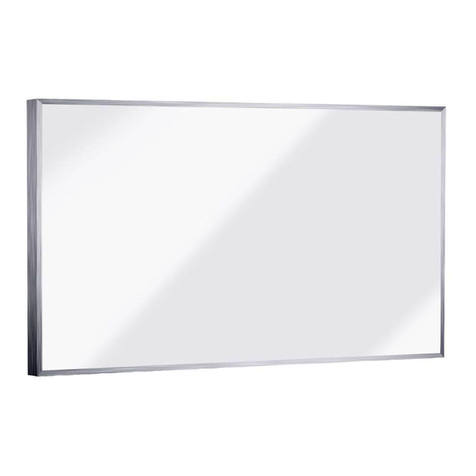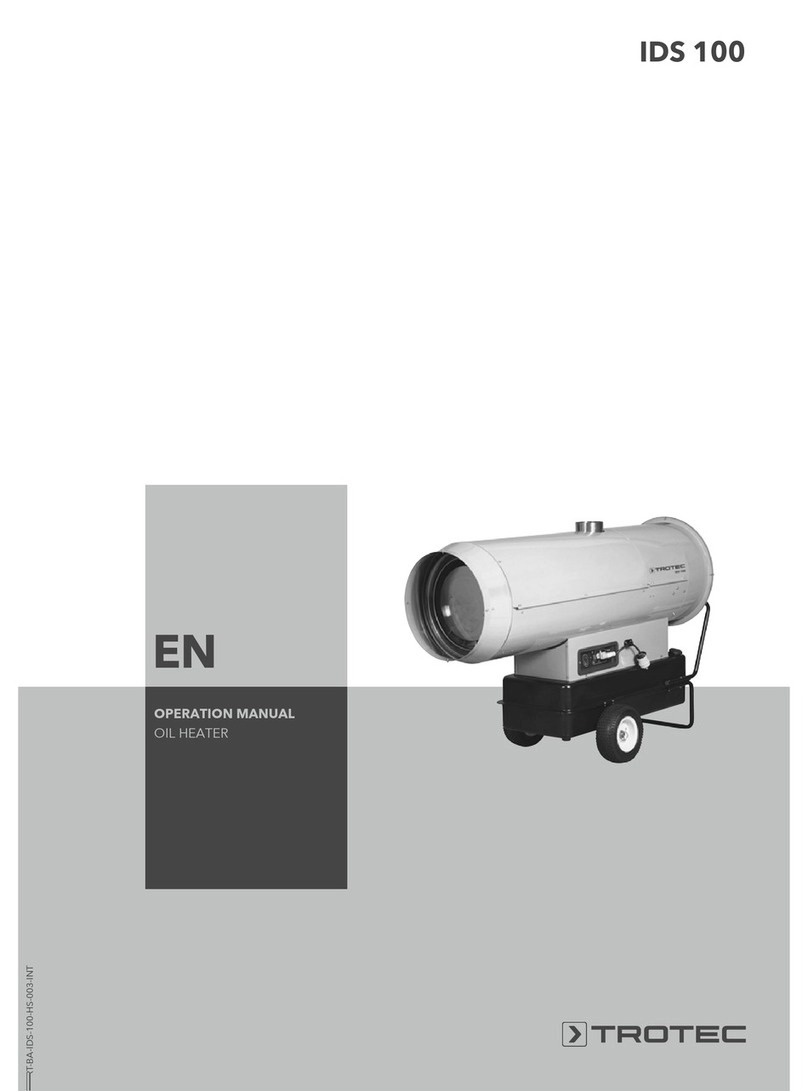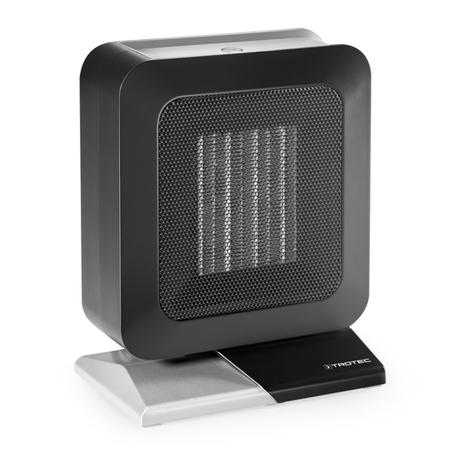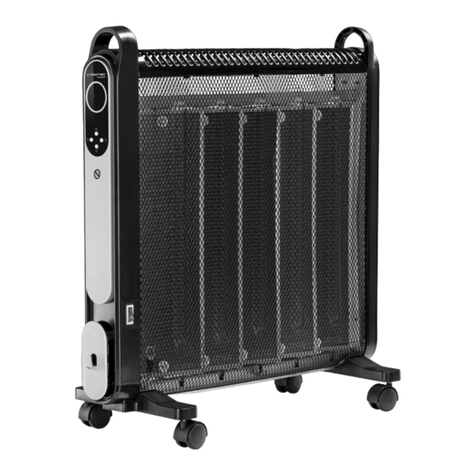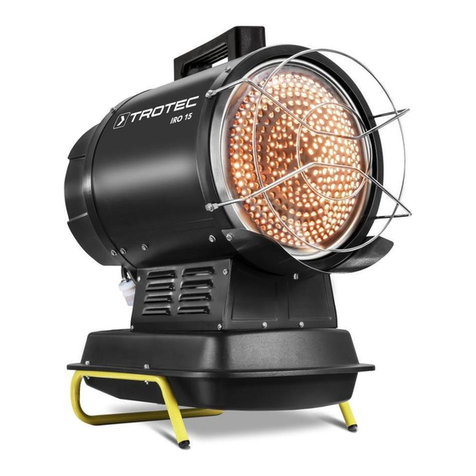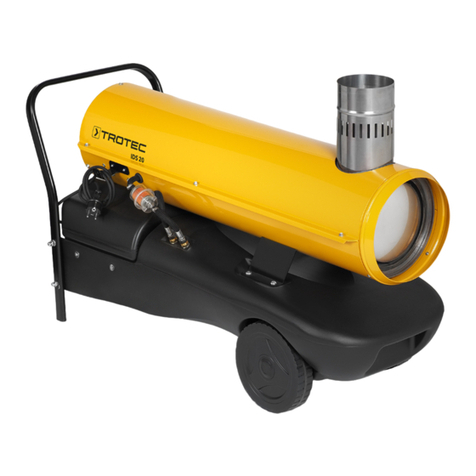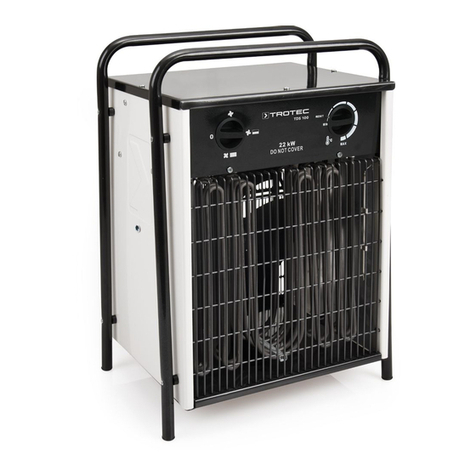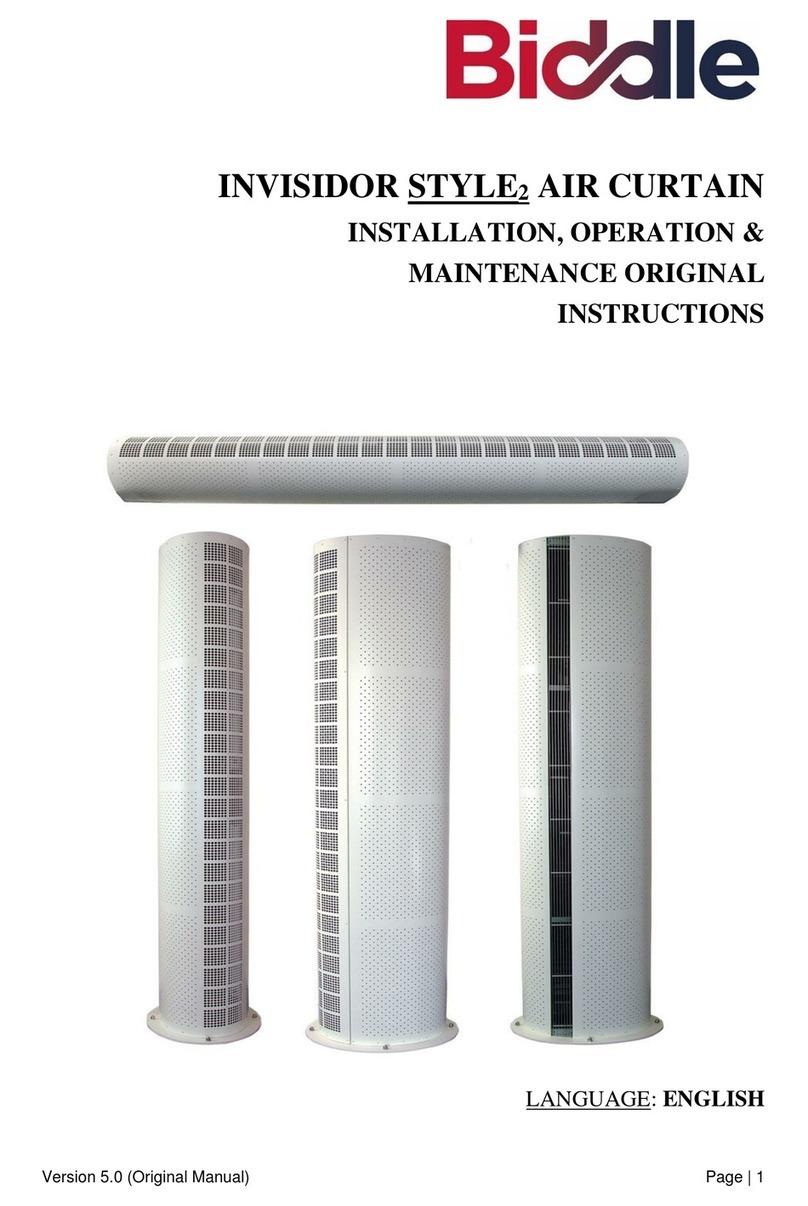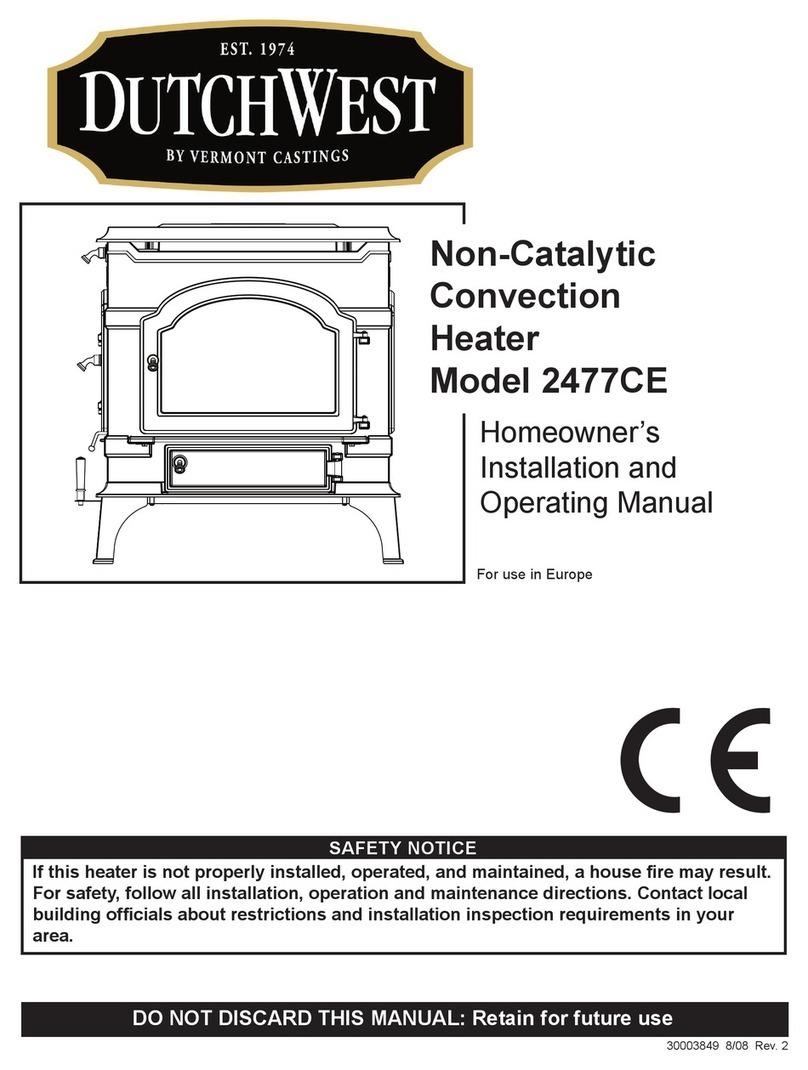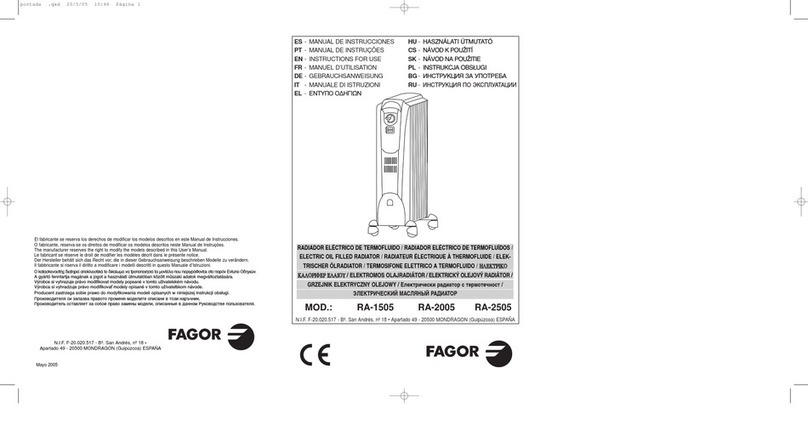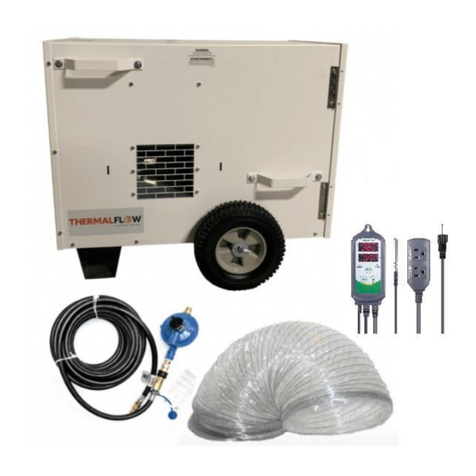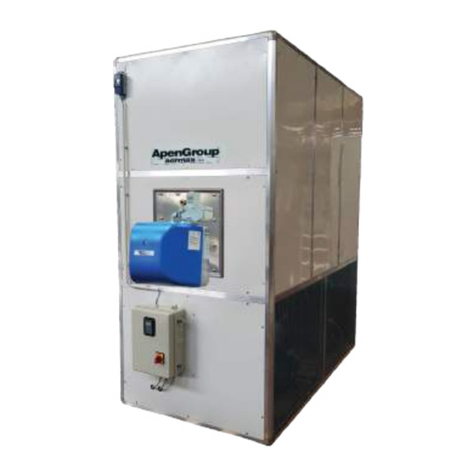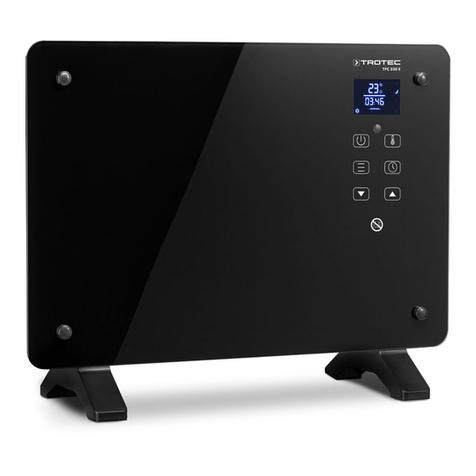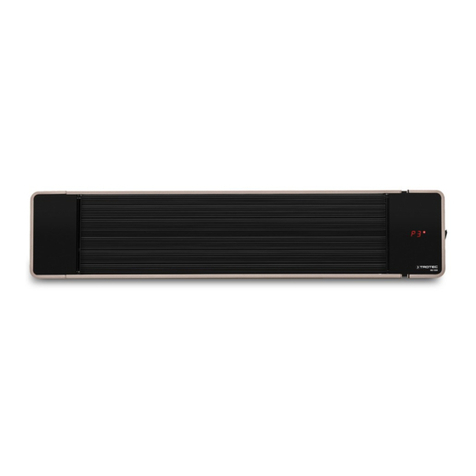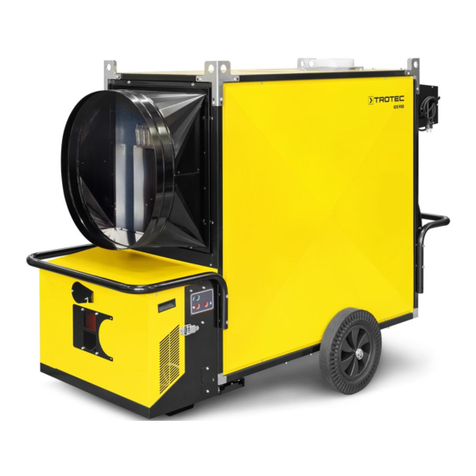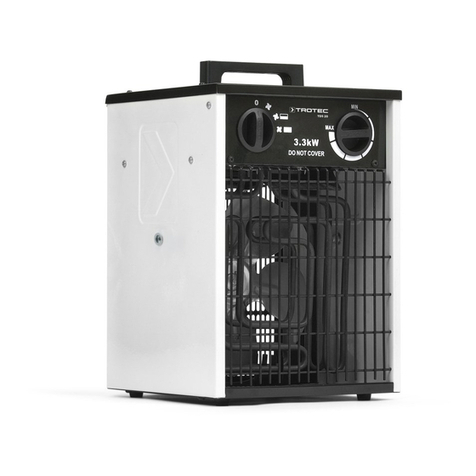
Bedienungsanleitung – IDS 20 / 30
DE A-5
• Schalten Sie das Gerät ein indem Sie den Wahlschalter auf die
Position „ON“ (Dauerbetrieb) stellen.
2. Automatischer Betrieb
Das Ölheizaggregat kann nur dann automatisch arbeiten, wenn eine
Steuereinrichtung (optional) angeschlossen wird, wie z. B. ein Thermo-
stat. Das Thermostat wird an der Thermostatsteckdose angeschlossen.
• Schalten Sie das Gerät ein indem Sie den Wahlschalter auf die
Position „ON + “ (Thermostatbetrieb) stellen.
Wenn der Anlaufzyklus beendet ist, dann bestätigt die elektronische
Steuereinheit durch eine kurze rote Blinkanzeige der Reset-Taste, dass
der Anlauf des Gerätes abgeschlossen ist.
Abschalten des Ölheizaggregats
• Schalten Sie das Gerät ab, indem Sie den Wahlschalter auf die
Position „0“ stellen.
• Falls Sie ein Thermostat verwenden, schalten Sie das Gerät über
die Einstellungen der Steuereinrichtung ab (z. B. indem das Ther-
mostat auf eine niedrigere Temperatur geregelt wird).
Die Flamme erlischt und der Ventilator läuft für ca. 90 Sekunden weiter,
um den Brenner abzukühlen.
Beschädigung des Gerätes durch Überhitzung!
Schalten Sie das Gerät niemals ab, indem Sie den Netz-
stecker ziehen. Dadurch kann das Gerät überhitzen.
Schalten Sie das Gerät ordnungsgemäß ab. Ziehen Sie
den Netzstecker erst ab, wenn der Ventilatormotor voll-
ständig angehalten hat.
• Warten Sie bis die automatische Nachkühlung beendet ist.
• Sichern Sie das Gerät gegen Wiedereinschalten, indem Sie den
Netzstecker ziehen.
Betrieb nach Störung wieder aufnehmen
Bei der ersten Inbetriebnahme bzw. nach vollkommener Entleerung des
Heizölkreislaufs kann der Zufluss von Heizöl zur Düse ungenügend sein.
Dann reagiert die Flammenkontrolleinrichtung und das Gerät blockiert.
• Warten Sie ca. 1 Minute ab.
• Drücken Sie die Reset-Taste ca. 5 Sekunden lang.
• Schalten Sie das Gerät ein.
Wenn das Gerät weiterhin nicht anläuft:
• Vergewissern Sie sich, dass im Tank noch Heizöl vorhanden ist.
• Drücken Sie die Reset-Taste.
Um die Störungsursache zu ermitteln:
• siehe die Kapitel „Sicherheitseinrichtungen“ und „Fehlersuche“
Sicherheitseinrichtungen
Das Ölheizaggregat ist mit einer elektronischen Flammen- und Höchst-
temperaturüberwachung ausgestattet, die mithilfe einer Fotozelle und
eines Sicherheitsthermostats arbeitet.
Die elektronische Steuereinheit steuert die Anlauf-, Stillsetzungs- und
Sicherheitsabschaltzeiten, falls Funktionsstörungen auftreten. Die Steu-
ereinheit ist mit einer Reset-Taste ausgestattet, deren Farbe (Betriebsan-
zeige) abhängig vom Betriebsmodus ist:
• ausgeschaltet bei Pausen- oder Standby-Modus des Gerätes in
Erwartung der Heizungsanforderung
• grüne Daueranzeige bei Normalbetrieb des Gerätes
• rote Daueranzeige bei Sicherheitsabschaltung des Gerätes
• orangefarbene Blinkanzeige bei Betriebsunterbrechung infolge
starker Netzschwankungen (T < 175 V oder T > 265 V); der Be-
trieb wird automatisch bei Stabilisierung der Spannung zwischen
190 V und 250 V wieder aufgenommen
Wenn das Gerät die Sicherheitsabschaltung ausgelöst hat:
• Drücken Sie zur Wiederaufnahme des Betriebes die Reset-Taste
3 Sekunden lang.
Verletzungsgefahr durch Verpuffung!
Unverbranntes Heizöl kann sich in der Brennkammer an-
sammeln und bei der darauf folgenden Wiedereinschal-
tung entzünden.
Führen Sie niemals mehr als zwei Wiederanläufe in Folge
durch.
Wenn die Sicherheitsabschaltung weiter besteht:
• Stellen Sie vor erneuter Inbetriebnahme des Ölheizaggregats die
Störungsursache fest (siehe Kapitel „Fehlersuche“) und beseiti-
gen Sie sie.
• Drücken Sie die Reset-Taste ist mindestens 5 Sekunden lang.
Das Selbstdiagnoseprogramm startet. Nach dessen Abschluss nimmt die
Reset-Taste eine Farbe (Selbstdiagnoseanzeige) abhängig von der Stö-
rungsursache an:
• orangefarbene Blinkanzeige bei Erfassung einer falschen Flam-
me während des Anlaufs
• rote Blinkanzeige bei Erfassung einer fehlenden Flamme wäh-
rend des Anlaufs
• rot/grüne Blinkanzeige bei Erfassung einer fehlenden Flamme
während des Betriebs
• orangefarbene Daueranzeige bei internem Fehler der elektroni-
schen Steuereinrichtung
Um die Störungsursache zu ermitteln:
• siehe Kapitel „Fehlersuche“
13. Transport
• Schalten Sie das Gerät ab wie unter „Funktionen und Bedienung“
beschrieben.
• Warten Sie bis das Gerät ganz abgekühlt ist.
• Bevor Sie das Gerät transportieren oder verstellen, prüfen Sie,
dass der Tankverschluss fest verschlossen ist.
Umweltverschmutzungsgefahr!
Während des Transports oder der Handhabung des Ge-
rätes kann Heizöl auslaufen. Der Füllstopfen des Tank-
verschlusses gewährleistet keine Dichtheit, damit Luft
eingeleitet und der Tank während des Betriebs entleert
werden kann.
Transportieren oder verstellen Sie das Gerät nur mit fest
verschlossenem Tankverschluss.
